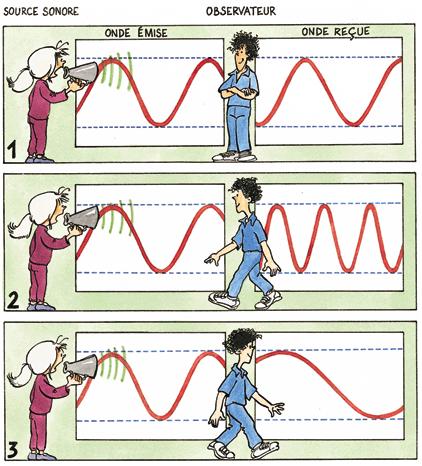Professor Richard Fitzpatrick: "Thus, the moving observer sees a wave possessing the same wavelength...but a different frequency...to that seen by the stationary observer." http://farside.ph.utexas.edu/teaching/315/Waveshtml/node41.html
Constant wavelength of light entails variable speed of light relative to the observer - this is fatal for Einstein's relativity and modern physics as a whole. In order to save modern physics, Fitzpatrick should change his text, e.g. in the following way:
Except for the Doppler-in-light scenario, the moving observer sees a wave possessing the same wavelength but a different frequency to that seen by the stationary observer. In the Doppler-in-light scenario, however, the moving observer sees the wavelength changed: from λ, as seen by the stationary observer, to λ'=λc/(c±v), where v is the speed of the observer relative to the light source.
Richard Fitzpatrick doesn't, but Kip Thorne does know why the moving observer should see the wavelength of light changed:
Kip Thorne: "If you move toward the [light] source, you see the wavelength shortened but you don't see the speed changed."
View: https://youtu.be/mvdlN4H4T54?t=296
Constant wavelength of light entails variable speed of light relative to the observer - this is fatal for Einstein's relativity and modern physics as a whole. In order to save modern physics, Fitzpatrick should change his text, e.g. in the following way:
Except for the Doppler-in-light scenario, the moving observer sees a wave possessing the same wavelength but a different frequency to that seen by the stationary observer. In the Doppler-in-light scenario, however, the moving observer sees the wavelength changed: from λ, as seen by the stationary observer, to λ'=λc/(c±v), where v is the speed of the observer relative to the light source.
Richard Fitzpatrick doesn't, but Kip Thorne does know why the moving observer should see the wavelength of light changed:
Kip Thorne: "If you move toward the [light] source, you see the wavelength shortened but you don't see the speed changed."



